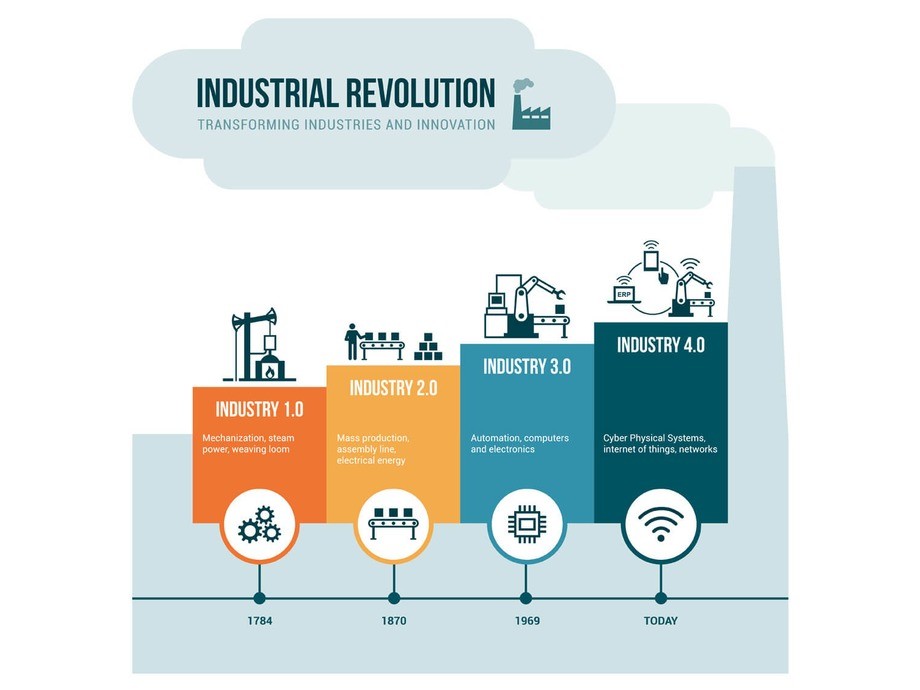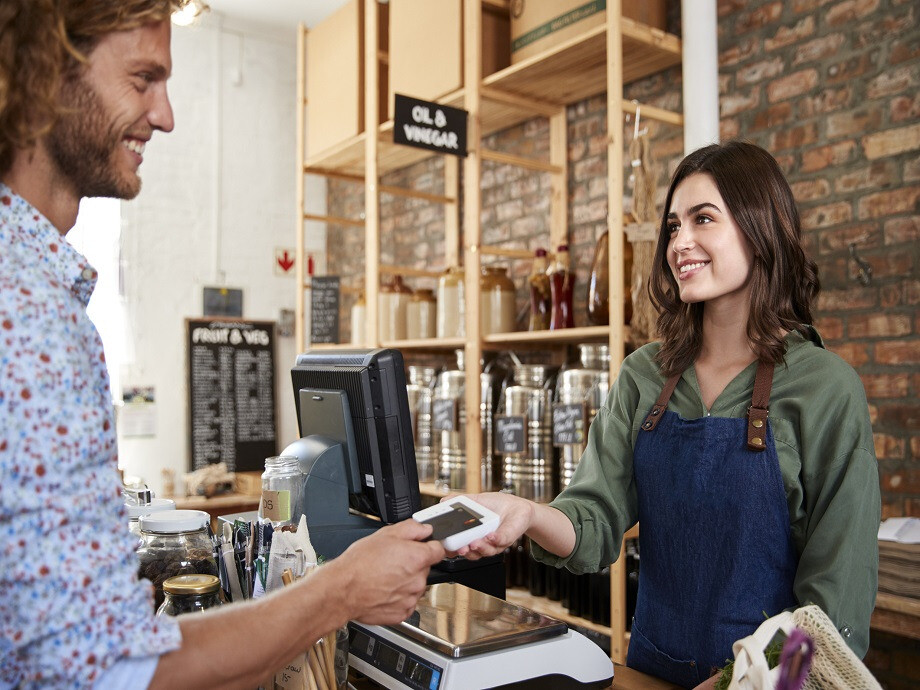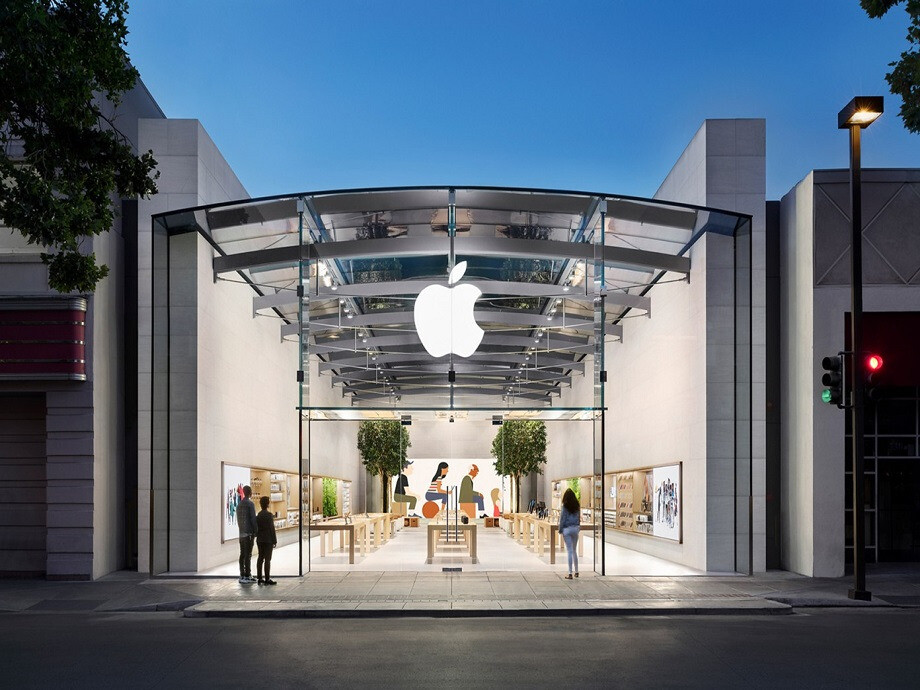
NFCs role in the Fourth Industrial Revolution
The Fourth Industrial Revolution, or 4IR for short, is the term which has been given to the fourth significant industrial era since the seminal Industrial Revolution of the 1700s. While the first Industrial Revolution was based on steam power, followed by an electricity based era the following century, 4IR has more in common with the third Industrial Revolution of the late 20th century, which was based around computers.
In essence, 4IR refers to the increasing number of technologies, based on Artificial Intelligence (AI) and new forms of communication, which are breaking down barriers between industries while blurring the lines between physical and digital. At the forefront of the exciting series of technology breakthroughs which represent 4IR is the Internet of Things (IoT), robotics, quantum computing, and even autonomous vehicles.
Despite the cutting-edge nature of 4IR, by definition, an industrial revolution shouldn't be based on technology which is out of the reach of everyday businesses. In this respect, an absolutely vital part of how 4IR is taking hold can be attributed to the IoT; that is the network of connected items which are capable of transferring data to one another. And right at the core of the IoT is Near Field Communication (NFC) technology.
NFC and the 4IR
Is NFC the steam power of the 21st century? Of course, business objectives have changed dramatically from 250 years ago, but when it comes to a technology which is revolutionising the way we create, operate and market products and services, the effect of NFC is there for all to see. NFC allows mobile device users to send and receive data in an instant, with just a swipe of their smartphone - that could be a passerby downloading a music track from a poster on the wall; a takeaway customer accessing a menu; or a conference delegate downloading a brochure.
Thanks to NFC, IoT is also changing the way we do things on an operational level. NFC tagging means a nurse can check how many empty beds are available on his or her ward with a glance at their handset, and a factory site manager is able to see the levels and whereabouts of all his stock at any given time.
At the centre of this exciting development is the sharp rise in the use of smartphones - 4.7 billion by the end of 2017 according to research from Statista. Such a large share of the population carry a smartphone in their pocket, and the vast majority possess NFC capability. This is the army of the 4IR - even if many of them haven't yet been mobilised!
While there are so many ways in which businesses can engage consumers with NFC, as well as collect data for valuable analysis, NFC and the 4IR shouldn't be confused as being purely customer facing. A study by Samsung found that employees believe that a smartphone boosts their productivity by as much as 34 per cent, and from manufacturing to finance and marketing, there are many businesses that have seen their operational efficiency revolutionsed by the IoT and NFC.
Government involvement in 4IR
Perhaps swayed by the clear direction of big business towards technologies such as AI and the IoT, the government made a big statement in the latest Budget unveiled last month (Wednesday, 22nd November). Chancellor Philip Hammond announced that he will commit £75m for AI as part of a new wave in tech spending which is a sure fire sign that in the UK, 4IR is very much underway. The money will go towards supporting promising start-ups and students seen as the 'bright young things' of the sector. Many AI innovations such as chatbots and other self-learning machines use NFC to facilitate the communication chain which allows them to send and receive data.
While the AI investment grabbed some of the headlines, there were a raft of other investments which can be seen as feeding the 4IR in the UK. They include £400m for electric car charge points, where an easy 'tap to charge' method has been launched using NFC-enabled smartphones, as well as commitments to more computer science teachers and the development of digital skills. It is heartening to see that the government has recognised the start of the 4IR, and is determined to equip the UK with the infrastructure to be leaders, rather than followers in this new world.
This initiative from the UK Government comes from there Industrial Strategy that was outlined in there White Paper, released on Monday 27th November.
Backed by 'the Mak'
The 4IR has its lobbyists - people that recognise the growing prevalence of the 4IR-associated technologies, and are determined that the UK doesn't fall behind in the race to adapt. Alan Mak, the Conservative MP for Havant, is one of those key influencers who have done their best to influence government thinking in the run up to the Budget. Leaving aside any political slants, it was interesting to hear how Mr Mak views the question of how to deal with the growing automation, which the 4IR technologies throws up - how can the UK offset the potential loss of jobs in industries which need a smaller human workforce thanks to innovations such as AI and the IoT?
Mr Mak says we need "new jobs in new industries like 3D printing; greater productivity through automation, AI and data-driven supply chains; and more exports as we sell our innovations to the world.
He continues: "Precision medicines will help us live longer, healthier lives. New energy technologies and a more efficient National Grid will lower household energy bills. Driverless cars will make roads safer and reduce congestion. Innovation will raise living standards." A bright future, then?
A marketing dream
From our own perspective, at NFC Direct we have seen first hand the range of different industries and variety of uses NFC is now prominent in. The technology has raised the bar in so many areas - from security to crowd control, asset tracking and Contactless payment; the possibilities are literally endless. If there is one sector in which we have seen most progress, maybe it is marketing. Never before has it been easier for organisations to engage customers and potential customers with their brand, and for consumers themselves to access the information they want. If you don't work directly with NFC, these consumer-facing innovations might be the first signs of 4IR which you come across. Recognising the sheer number of marketing uses for NFC, we created an offering which provides many of these marketing solutions as part of a single package; TapThat™.
With virtually a warehouse full of items which include NFC tagging to offer our customers, we decided to combine these NFC cards and business cards, posters, wristbands, vouchers and more behind the TapThat™ banner. The theory is simple - these are all NFC marketing products which can be activated by the customer with the greatest of ease - a tap or swipe of their mobile device.
We have seen our customers get creative when it comes to where they are directing customers. It might be straight to a competition which promotes their product or service, or to the download page for a branded app. They might want to push a special offer, or want to provide supplementary details which can influence a purchasing decision, like a restaurant menu or product guide. There are options for video and audio downloads, while important information such as store location and opening hours are also easy to pass on through an embedded NFC tag. Thanks to NFC, voucher collection and redemption has seen a new lease of life from the days of crumpled newspaper cut outs, and loyalty programmes have been able to leave behind the stamped card in favour of a simple Contactless system.
Whether it is a beer mat or a key ring - products now have two uses thanks to NFC tagging, and in many cases, the extra cost of using an NFC tagged product is negligible.
Made to measure
While the bain of many Marketing Managers' existence used to be the problem of proving a return on investment (ROI) from their campaigns, 4IR will see a new accountability come in. Unlike print advertising, or radio and TV campaigns, with TapThat™ we are able to monitor campaigns so we can provide reporting to clients. In the 4IR era, you know how consumers are engaging with your campaign. We can tell clients how many times tags have been tapped, the location of taps, the type of smartphones which are used, how many taps led to enquiries or conversions, and which times of day saw more taps. Not only is this a revelation for marketing professionals who need to measure their ROI, but it also feeds into future campaigns, allowing them to be fine-tuned.
That's 4IR as we see it, and if there is one important takeaway in the wake of the Budget, it is that we should be embracing the 4IR as a country, not shying away from it. Just think, Johannes Gutenberg faced the wrath of the hand-copying industry when he invented the printing press in 1439, but he also opened the door to a new era for education and entertainment.



Comments